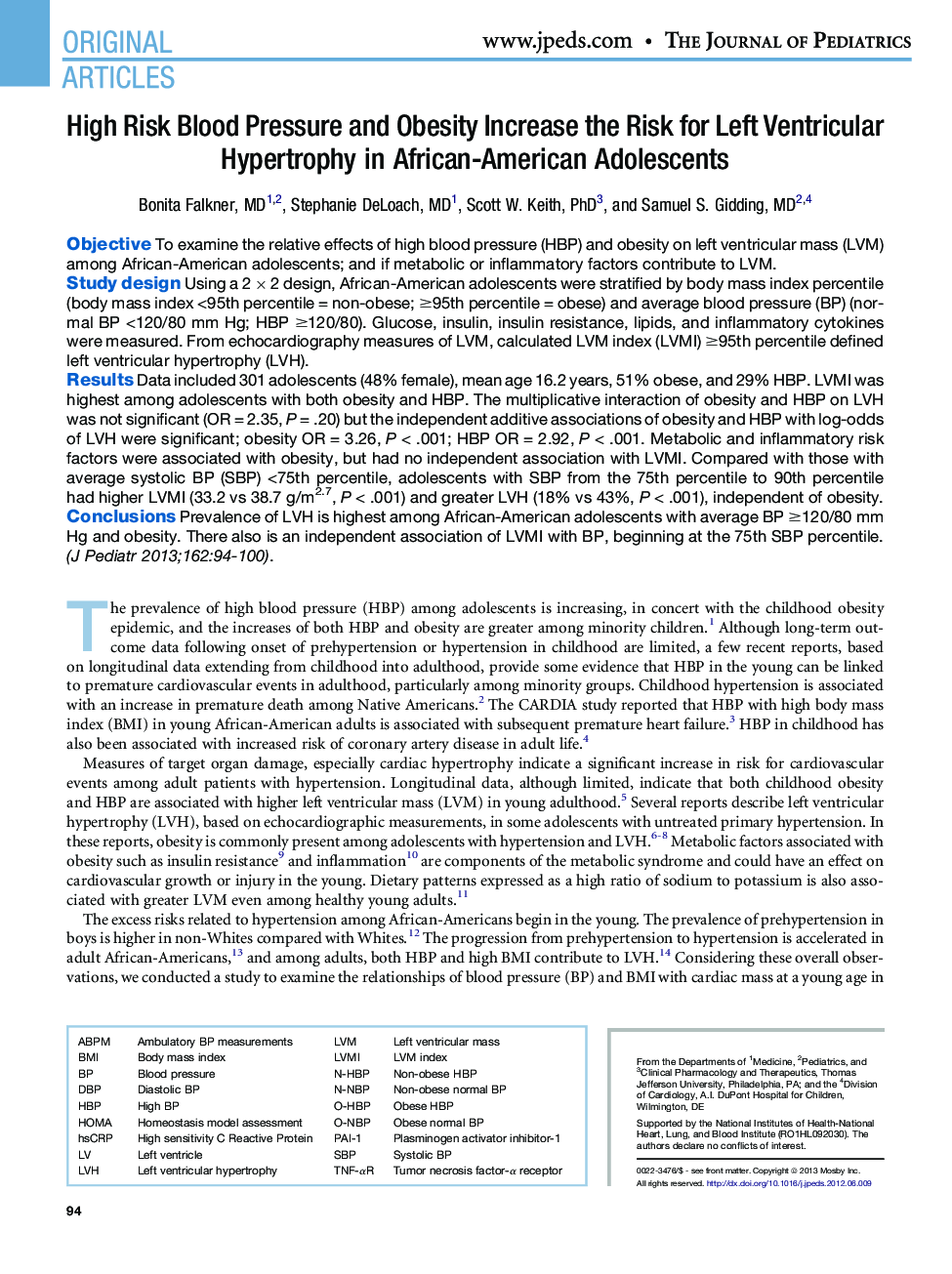| Article ID | Journal | Published Year | Pages | File Type |
|---|---|---|---|---|
| 6224335 | The Journal of Pediatrics | 2013 | 7 Pages |
ObjectiveTo examine the relative effects of high blood pressure (HBP) and obesity on left ventricular mass (LVM) among African-American adolescents; and if metabolic or inflammatory factors contribute to LVM.Study designUsing a 2 Ã 2 design, African-American adolescents were stratified by body mass index percentile (body mass index <95th percentile = non-obese; â¥95th percentile = obese) and average blood pressure (BP) (normal BP <120/80 mm Hg; HBP â¥120/80). Glucose, insulin, insulin resistance, lipids, and inflammatory cytokines were measured. From echocardiography measures of LVM, calculated LVM index (LVMI) â¥95th percentile defined left ventricular hypertrophy (LVH).ResultsData included 301 adolescents (48% female), mean age 16.2 years, 51% obese, and 29% HBP. LVMI was highest among adolescents with both obesity and HBP. The multiplicative interaction of obesity and HBP on LVH was not significant (OR = 2.35, P = .20) but the independent additive associations of obesity and HBP with log-odds of LVH were significant; obesity OR = 3.26, P < .001; HBP OR = 2.92, P < .001. Metabolic and inflammatory risk factors were associated with obesity, but had no independent association with LVMI. Compared with those with average systolic BP (SBP) <75th percentile, adolescents with SBP from the 75th percentile to 90th percentile had higher LVMI (33.2 vs 38.7 g/m2.7, P < .001) and greater LVH (18% vs 43%, P < .001), independent of obesity.ConclusionsPrevalence of LVH is highest among African-American adolescents with average BP â¥120/80 mm Hg and obesity. There also is an independent association of LVMI with BP, beginning at the 75th SBP percentile.
